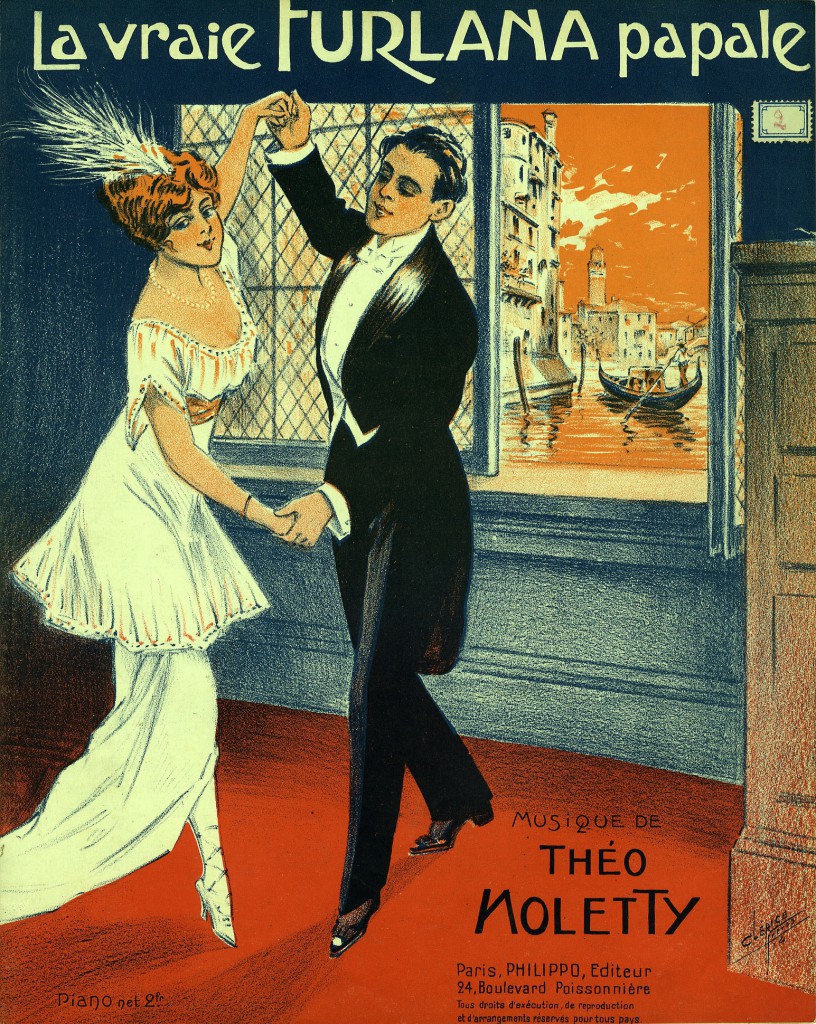
Traditionally the furlana was an Italian folk dance from Friuli, a region between Trieste and Venice. Dating back to the 17th century it became popular on the European continent in the first half of the 18th century, thanks to Couperin and Rameau. Pietro Longhi the painter of Venetian 18th century everyday life immortalized the furlana in one of his typical genre scenes.
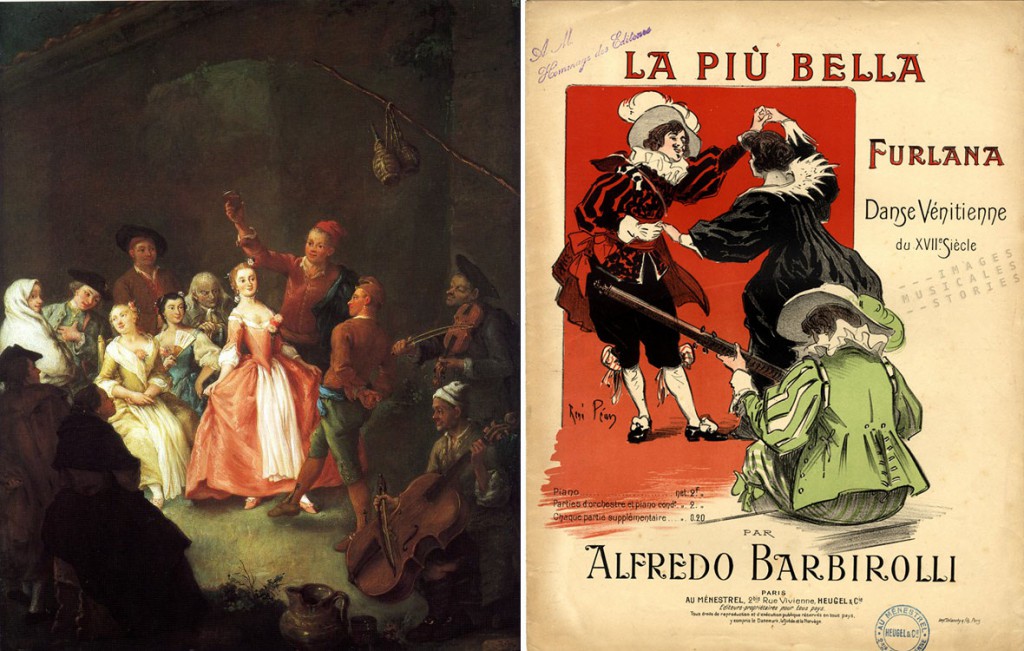
By the end of the 18th century the furlana was passé. Apart from an opera or two in which the furlana was staged, nobody cared about the dance anymore, let alone knew how to dance it. It was a rather cheerful tune though if the version from Amilcare Ponchielli‘s opera La Gioconda is anything to go by.
And then all of a sudden at the eve of the Great War, in the spring of 1914, the furlana became the dance craze! It was extremely short-lived and lasted but a few months. But in that fleeting period it had the ambition to replace the tango which had invaded Europe around 1912. As the story goes we have to thank Pope Pius X for this fad. Pius X was strongly opposed to modernist interpretations of Catholic doctrine. He advocated traditional devotional practices, and of course abhorred the sensual and shocking tango.

Allegedly Pope Pius X, in a reaction to the dangerous vogue of the tango, had invited two young members of the Pontifical aristocracy to perform the notorious tango in a strictly private audience. Having witnessed these ‘ridiculous barbarian contortions’, Pope Pius X advised young people to adopt the delightful Venetian dance instead of the devilish tango. It was a (chaste) dance that he had often seen in his youth, where physical contact went no further than clasped hands. This papal advise was repeated in Rome’s Il Tempo newspaper. And before long the furlana became the vogue in Rome, soon to be followed in Paris.
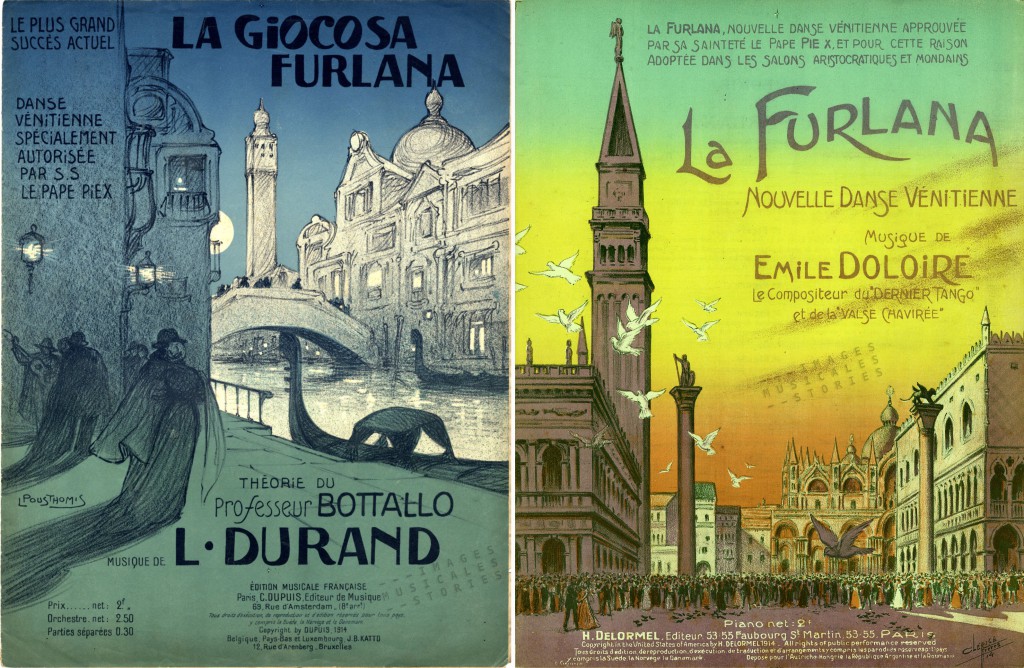
It is in that very short period of time, between the spring of 1914 and the outbreak of WWI, that every self-respecting dance teacher, every composer and every publishing house had to quickly concoct ‘the real’ furlana. A Venetian dance teacher claimed he had succeeded in recreating the original furlana after an interview with an octogenarian. It looked like this:
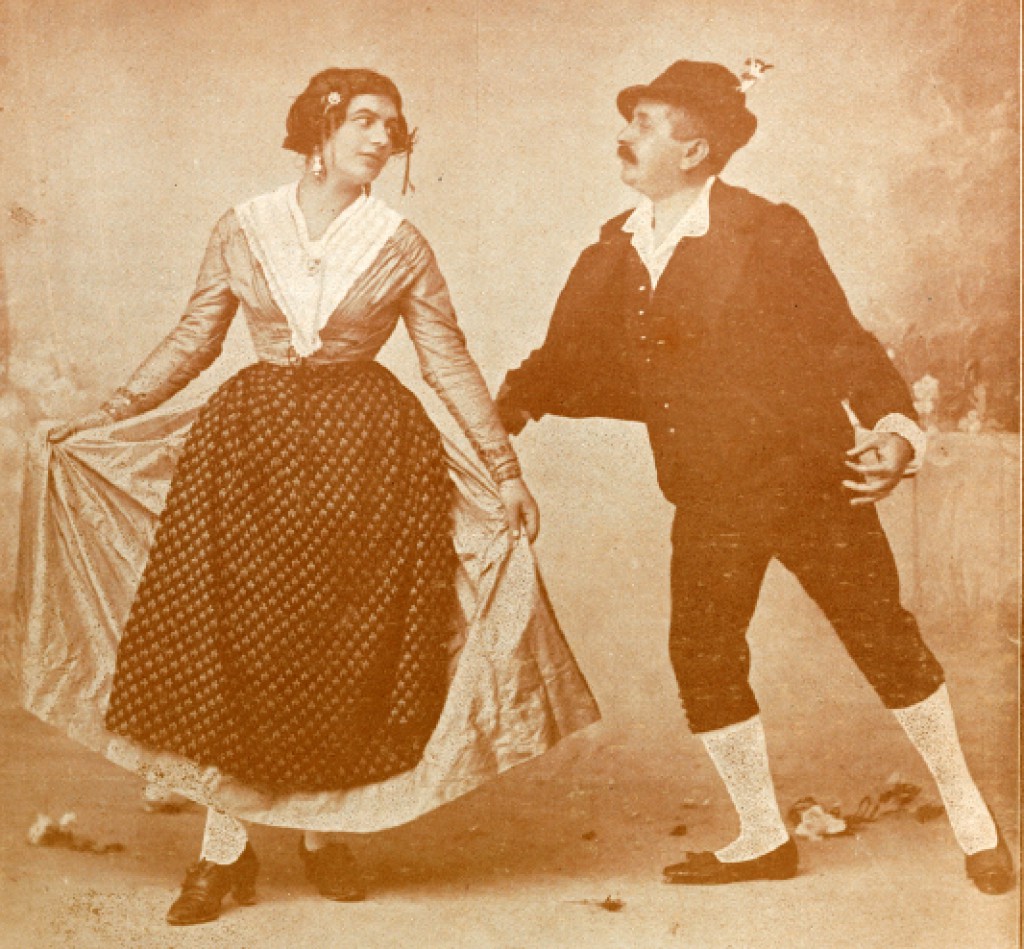
At the same time a Roman dance teacher was quick to tell of his good fortune to discover an ancient dance manual explaining all the original movements of the furlana.

In Paris as well, all in the music business were frantically claiming their importance in the furlanamania. One publisher tried to lure his potential clientèle reassuring them that the furlana could be danced everywhere: ‘La Furlana, nouvelle danse Vénitienne approuvée par sa sainteté le Pape Pie X, et pour cette raison adoptée dans les salons aristocratiques et mondains’. Another one boldly retraced the origins of the furlana to an ancient gondolier dance.
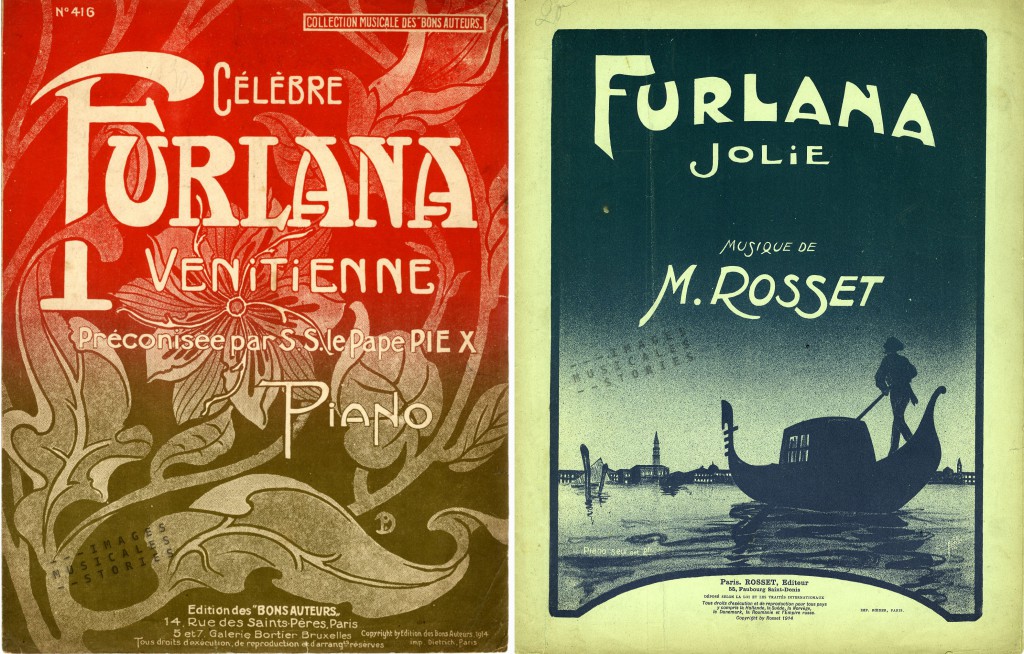
Parisian stylish dance teachers hurried to scrape together some movements in order to create a new choreography. Some of these teachers succeeded in attaching their name and theory to the published music. The best known of them was the elegant Duque (Antonio Lopes de Amorim Diniz) a Brazilian who abandoned a career in dentistry to become a dancer and dance teacher in Paris. Duque was responsable for another dance craze: the maxixe. But this is for a later post. For now we’re off to Venice, going to dance with a gondolier!
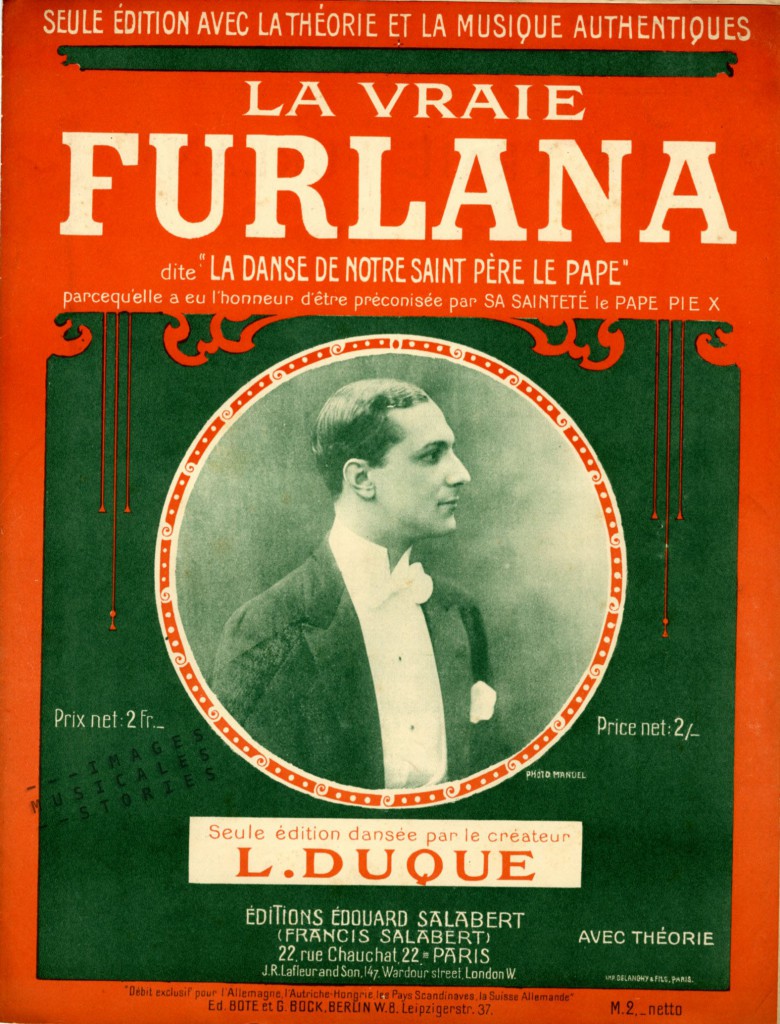

Veel dansplezier in Venetië!
Bon séjour chez les Ritals , n’oubliez pas vos palmes si vous invitez un gondolier !!!
Revenez avec de nouvelles bonnes idées … amitiés!
Het is zoals gebruikelijk weer interessant, wanneer gaan jullie een boek maken over bladmuziek ?
Joe Tooley sent us the cover of La Furlana des Doges, illustrated by Larramet